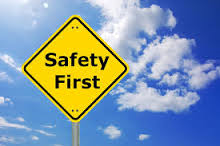Information
-
Internal Kitchen Audit for Cook on site Facility Fresh Fields Main Kitchen blue bowls & sandwich section.
-
Document No.
-
Client / Site
-
Conducted on
-
Prepared by
-
Location
-
SUMMARY: Total score more than 90% needed for a pass, Areas of concern, point by point and corrective action to be taken by whom and when: 1. Quality Control: An internal kitchen audit helps ensure that the kitchen operations are meeting the established standards of quality. It allows for a thorough review of food preparation, handling, storage, and overall hygiene practices. Identifying any deviations from the set standards helps maintain consistency and ensures the delivery of high-quality food to customers. 2. Compliance and Safety: Regular audits help ensure compliance with local health and safety regulations. By assessing the kitchen's adherence to proper sanitation, food handling, and safety protocols, potential hazards can be identified and rectified promptly. This helps prevent foodborne illnesses, accidents, and any legal or regulatory issues that may arise due to non-compliance. 3. Cost Control: Conducting audits can contribute to cost control measures within the kitchen. By assessing inventory management, portion control, and waste management practices, areas of inefficiency or excessive spending can be identified. This information enables the kitchen management to make informed decisions and implement strategies to minimize costs and maximize profitability. 4. Process Improvement: Audits provide an opportunity to review kitchen processes and identify areas for improvement. By analyzing workflow, equipment functionality, and staff training needs, the audit can help streamline operations, enhance productivity, and identify any training gaps that may exist. This continuous improvement approach helps maintain a competitive edge and ensures the kitchen is running efficiently. In summary, conducting internal kitchen audits helps maintain quality standards, ensures compliance with regulations, controls costs, improves processes, and safeguards the brand's reputation. It is a proactive approach that supports the smooth and successful operation of a food service establishment.
1.Staff on Duty. Chef and Kitchen Hand in the section.
-
Take photo, and names
- Take staff members photo click next button
2.Staff
-
Staff are wearing appropriate uniform and clean ?
-
Gloves are worn while preparing food ?
-
Staff are not wearing excess jewellery, nail polish, false nails,
-
Are all staff wearing hair nets? Making sure hair nets cover all hair no fringes, or ponytails showing.
-
Good hygiene practices are followed?
-
No open wounds, sores, etc noted.
-
Staff have no personal belongings in their work area?
-
Did staff wash their hands between tasks (handling raw meat, seafood,, mops, garbage, etc).
-
Bacterial soap provided at all wash hand basins
-
Disposable paper towels provided & used to dry hands
3.Staff Training
-
All kitchen staff have completed their mandatory training within the last 12 months?
-
Food saftety training for food handlers dates?
4. Work Area
-
Are the work benches clean and organised?
-
Is floor clean and all food stored off the floor?
-
Kitchen floor including under the work benches and equipment are clean?
-
Fixtures, fittings, equipment and utensil are clean?
-
Food contact surfaces are clean and sanitised?
-
Lighting and ventilation adequate?
-
Food items within the kitchen are stored safely I.e. Off the floor, not over stocked and sealed?
-
Food items are clearly labelled with date opened and use by date ?
-
Are pots and pans clean and stored in the right manner?
-
Are the shelves clean?
-
Is the oven clean ?
-
Stick blender is clean with no food residue around blades and machine?
-
No food or boxes stored on floors and all within date?
-
Blue bowls all clean and dry?
-
Milk crates clean
5.Cold room/fridge for this section
-
Is cold room/fridge in good condition and clean outside?
-
Is cold room below 5 degrees ?
-
Is the floor of the cold room or base of the fridge clean with no food items stored on floor?
-
Are shelves and walls of cold room/ fridge clean ?
-
Are shelves in good condition?
-
Food in cold room/fridge is protected from contamination and stored appropriately?
-
Products are within use by dates ?
-
Stock is rotated and packed correctly?
-
Food items are clearly labelled with date opened and use by date?
6.Goods Receivable
-
Goods received form Is completed daily?
-
Goods received form Yes or No are used in the Quality & Packaging Check.
-
Goods received form relevant satisfactory boxes are filled in? IE milk temperature is needed but not for bread.
7.Food packaging and weighing
-
Is the chef taking the temperature of food before its modified and after its modified?
-
Is there any risk of cross contamination during preparation?
-
Was the temperature of the food below 5 degrees
-
Is there any food on the bench waiting to be portioned? If so was the temperature below 5 degrees?
-
Were the sauces decanted into smaller trays to go into the blast chiller to help it chill faster?
-
Check a random trolley of food items from this section in the cold room. Is the food below 5 degrees? Are the bowls clean? Are the stickers put on in a central location?
-
How long did it take to portion one full dessert?
-
High risk foods kept out of refrigerated conditions as short as possible during preparation
-
All high risk foods not left unattended e.g. During breaks
-
All food prepared with minimum delay
-
How many sandwiches made at one time?
-
Temperature of the fillings below 5 degrees?
-
Temperature of the eggs below 5 degrees?
-
Any obesvations
8.Thermometer
-
Thermometer utilised and accurate to +- 1 degree? Correct wipes used.?
-
Calibration records (how many Thermomotors?)
-
Probe wipes available
9.Food sampling and retention
-
Samples taken for each meal
-
Correct foods being sampled
-
Correct amounts being sampled (100g)
-
Correctly labelled
-
Kept for 14 days
-
Stored frozen & segregated















